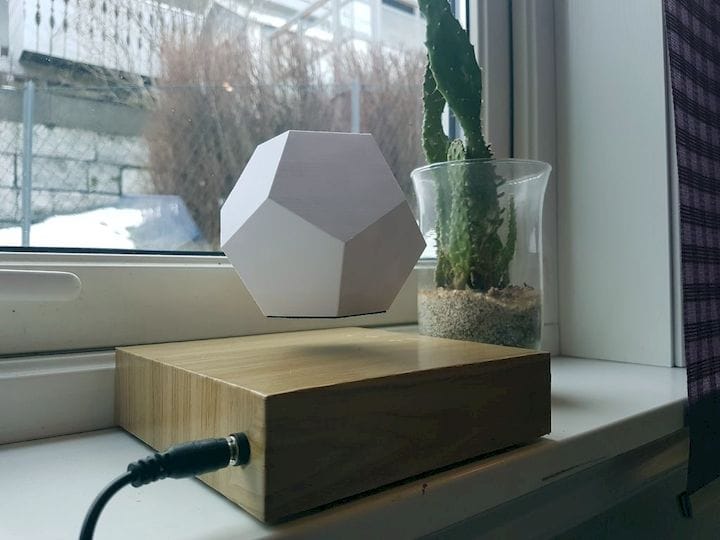![An incredible levitating planter [Source: Instructables]](https://fabbaloo.com/wp-content/uploads/2020/05/image-asset_img_5eb0a021497e0.jpg)
This week’s selection is the magical Levitating Plantar by Thingiverse contributor Andreas S Nordstrand.
Norway-based Nordstrand was fascinated with the commercial product “LYFE” by Flyte. This product was launched as a Kickstarter in 2016, gaining over 1200 sales and raising over US$300K.
The LYFE planter is quite magical as it uses magnets to mysteriously levitate a small planter. The LYFE product even slowly rotates your plant so that it does not grow into a shape towards the sunlight. It also includes a hidden interior reservoir to catch surplus water. It’s a fascinating object that will truly gain attention whenever someone sees it for the first time.
However, Nordstrand was not pleased with the price of the LYFE planter: US$299 as listed on their site as of this writing.
![The original LYFE levitating planter from Flyte [Source: Flyte]](https://fabbaloo.com/wp-content/uploads/2020/05/image-asset_img_5eb0a021a6d0c.jpg)
Nordstrand set out to duplicate this design with his own skills, and appears to have succeeded. He’s posted the file for you to 3D print. However, to make this item work correctly, there are other components required.
There are only three 3D printed parts involved, as the main planter is a solid unit. The other two 3D printed parts are used for the mount.
![The magnetic suspension core used in the Levitating Planter 3D print project [Source: AliExpress]](https://fabbaloo.com/wp-content/uploads/2020/05/image-asset_img_5eb0a021eb09e.jpg)
The most notable component is the “Magnetic Suspension Core”, which Nordstrand suggests buying from AliExpress at a cost of US$45. This component will be embedded in the base (which Nordstrand did not 3D print but instead simply laser cut). It provides a very strong magnetic field that can lift around 500g.
![Testing the magnetic levitation module [Source: Instructables]](https://fabbaloo.com/wp-content/uploads/2020/05/levitate-ov_result_img_5eb0a02246c1c.jpg)
One piece of advice we’d provide is to ensure your 3D print is actually watertight. Very often 3D prints are quite porous and fluids will simply leak through, as our experiment showed some years ago.
Nordstrand also recommends removing the planter from the magnetic field while watering, simply because the sudden addition of water weight may shift the center of gravity and you might end up with a bit of a mess to clean up.
One thing we have a bit of a concern about is whether Flyte will take exception to this rather identical version of their design. It’s possible they may demand that Thingiverse and Instructables remove the item from their sites in the future.
Via Thingiverse and Instructables











This week’s selection is a 3D printed Coronavirus!